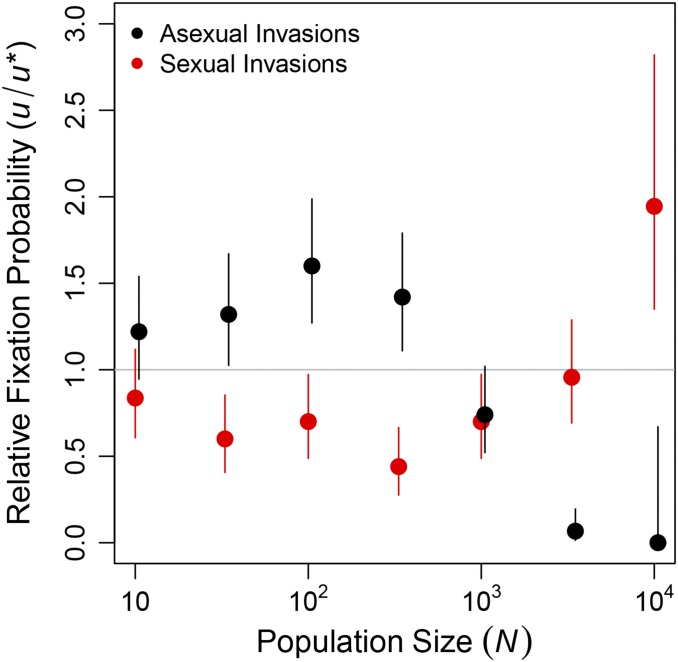Figure 4.
Sex has a short-term advantage in large populations. Asexual (black) or sexual (red) mutants were introduced into equilibrium sexual or asexual populations, respectively, at an initial frequency of Frequencies of the modifier mutations were monitored until the modifiers were either fixed or lost. Values are the proportion of fixations divided by the neutral expectation () and 95% confidence intervals based on replicate invasion trials for each population size N. The data shown here are from the separate sex implementation of the reproductive mode (see Materials and Methods, Reproductive mode). Analogous data for recessive sex and dominant sex are shown in Figure S4.

